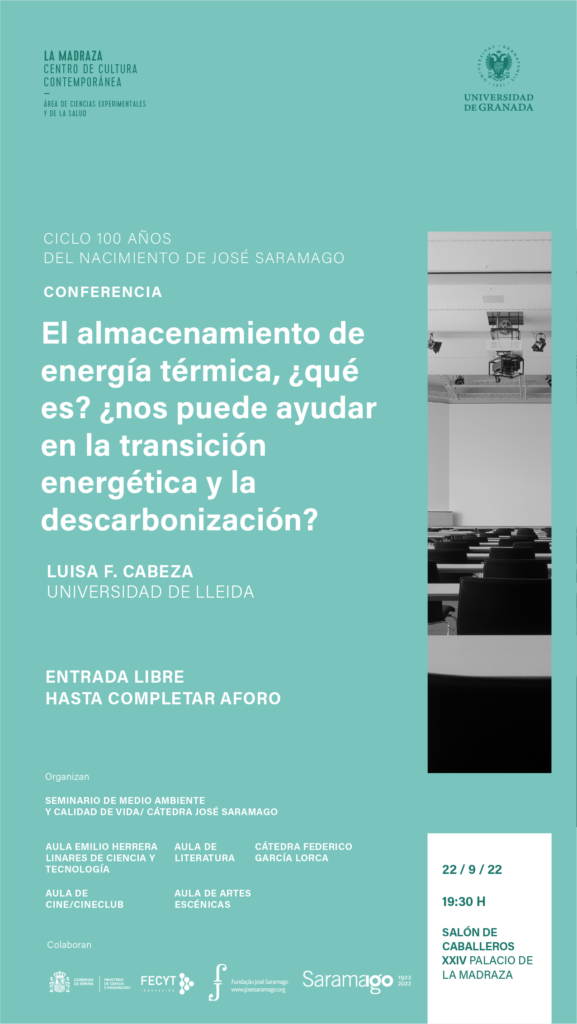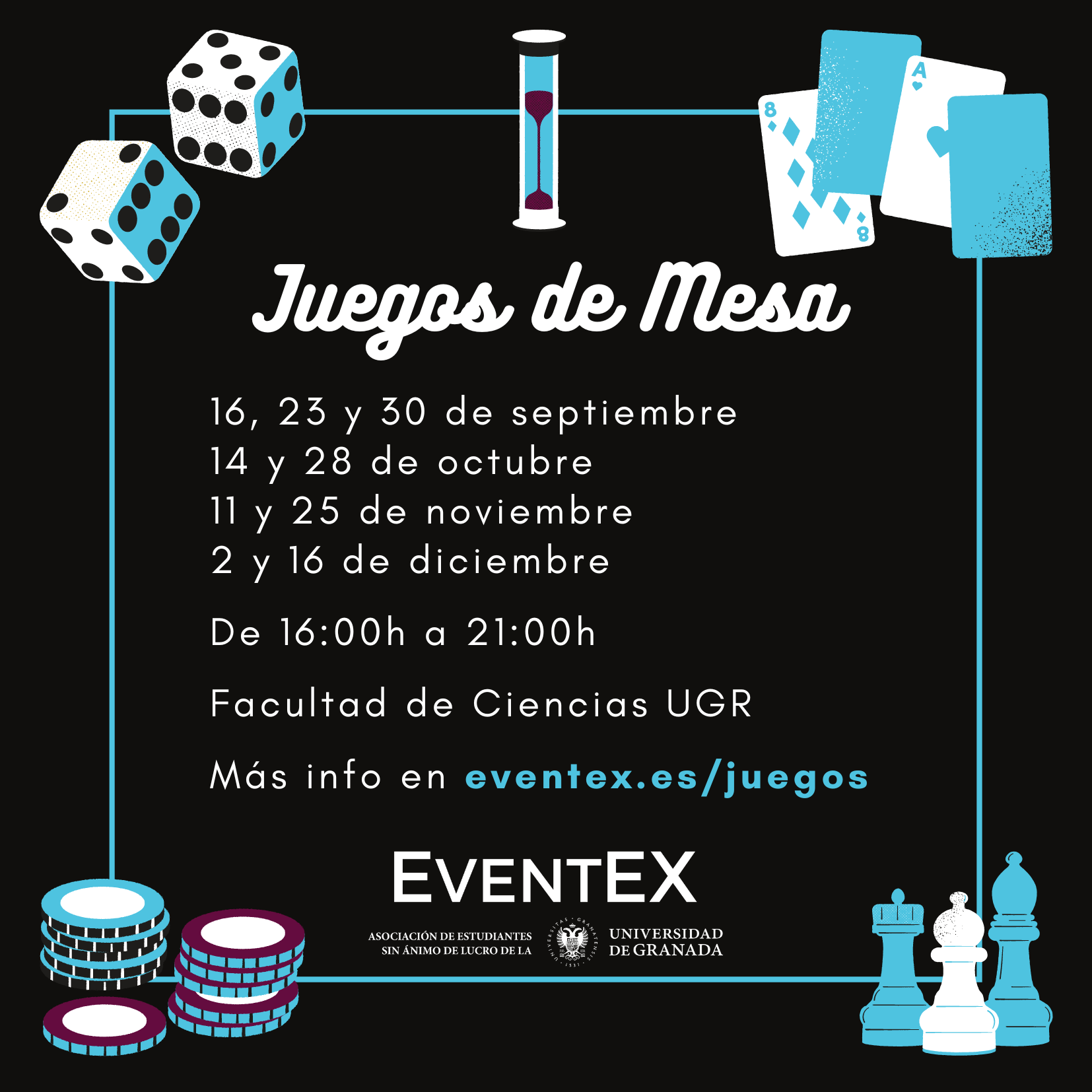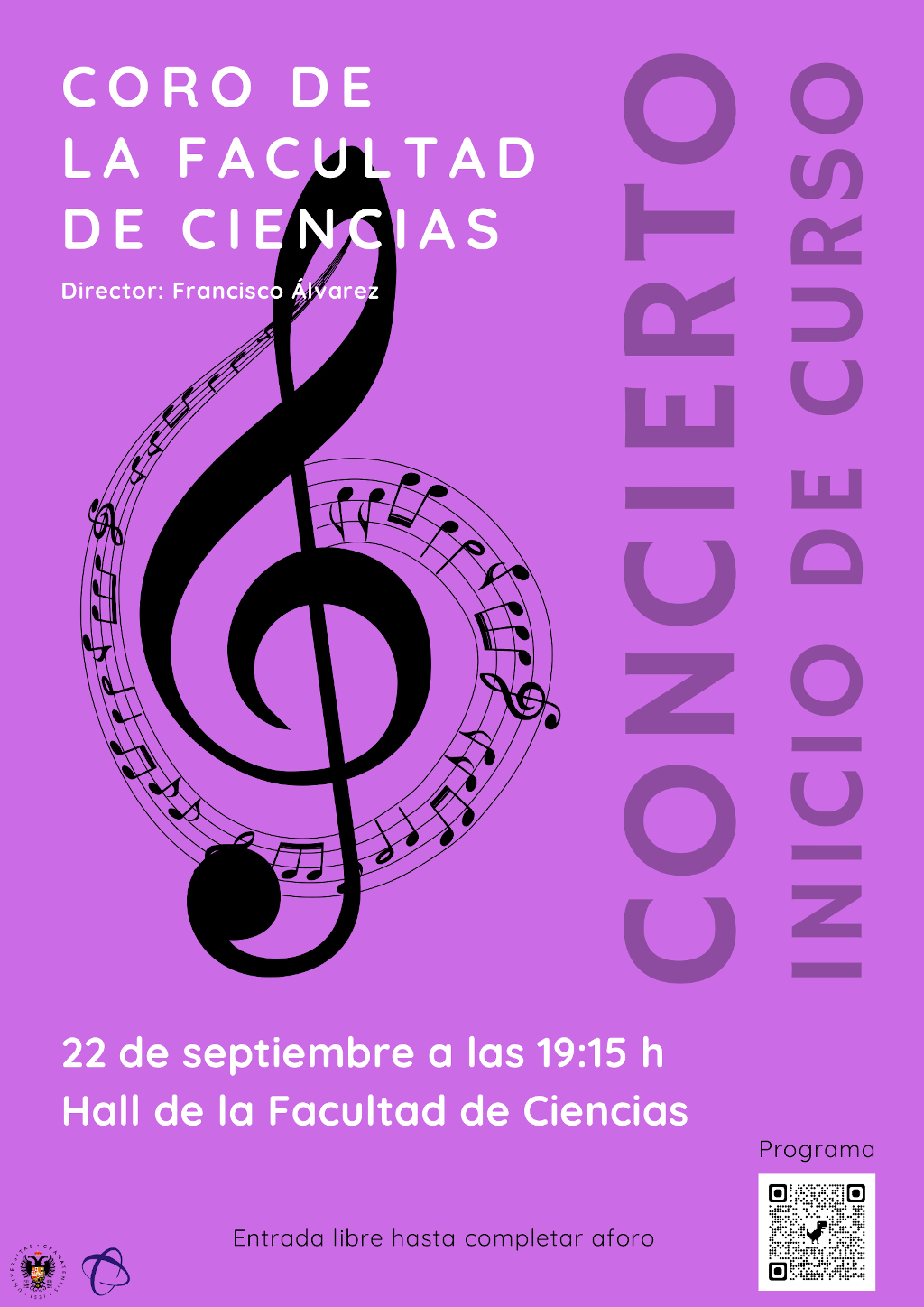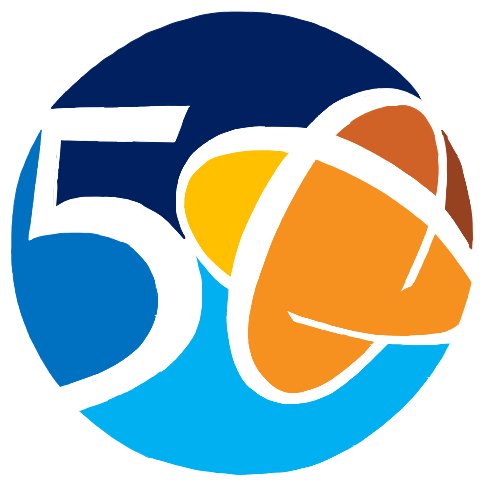Noticias
Fecha: Jueves, 22 de septiembre de 2022.
Hora: 19:30 h.
Lugar: Salón de Caballeros XXIV. Palacio de la Madraza.
Ponente: Luisa F. Cabeza. Universidad de Lleida.
Entrada libre hasta completar aforo
Organizan:
Aula Emilio Herrera Linares de Ciencia y Tecnología
Seminario de Medio Ambiente y Calidad de Vida/Cátedra José Saramago
Aula de Literatura
Cátedra Federico García Lorca
Aula de Artes Escénicas
Aula de Cine/Cineclub
Colabora:
Fundación Española para la Ciencia y la Tecnología (FECYT)
Fecha: 23 Septiembre 2022.
Hora: 12:00 a 13:00.
Lugar: Seminario 2 del Instituto de Matemáticas de la UGR.
Speaker: Marco Gallo, Università di Bari.
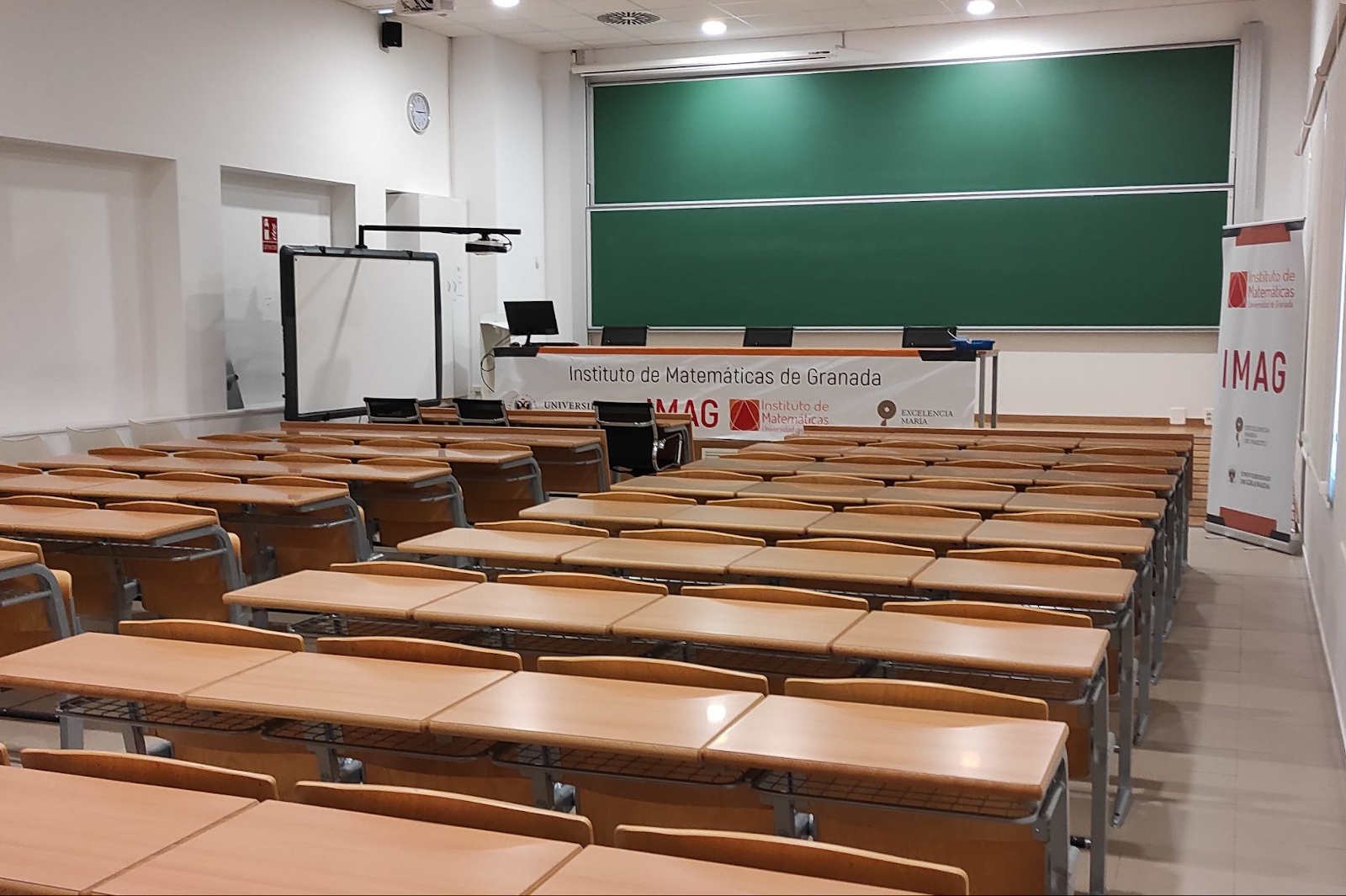
Fecha: 15 de octubre de 2022.
Duración: La actividad se iniciará a las 10.00h y terminará a las 13.00h aproximadamente.
El taller empezará en la Casa de la Cultura de Gorafe, y posteriormente haremos una pequeña ruta para colocar varias cajas nido dentro del municipio y para observar las aves del entorno. Facilitaremos prismáticos a aquellas personas que no dispongan de ellos y pondremos a disposición de todos varios telescopios terrestres con el que poder ver más de cerca las especies que tengamos en los alrededores. Además, contaremos con varias guías de aves.
Es totalmente gratuito y podrá participar cualquier persona tanto de nuestra comunidad universitaria como de fuera, pues está abierto a todo el público interesado (niños a partir de 5 años).
Para inscribirse se deberá enviar un correo a con los siguientes datos:
- Nombre y apellidos.
- Teléfono móvil de contacto.
- Lugar de residencia.
- Consentimiento para incluirte en nuestra lista de difusión (SI/NO).
- Consentimiento para realizar fotos y/o poner fotos en redes sociales (SI/NO).
Este taller está englobado dentro del proyecto que estamos llevando a cabo a lo largo de 2022 desde nuestra Asociación, de Divulgación sobre Medio Ambiente dentro del Geoparque de Granada en el que queremos que los participantes vivan la experiencia de conocer un territorio único a través de su naturaleza.
Organiza: Asociación Darwin Eventur en colaboración con el Ayuntamiento de Gorafe y el Geoparque de Granada, y con el que se cuenta con el patrocinio de Viking Optical y Lynx Edicions.
Más información sobre actividades de Divulgación sobre Medio Ambiente en el Geoparque de Granada
Fecha: Viernes 16, 23 y 30 de septiembre, 14 y 28 de octubre, 11 y 25 de noviembre y 2 y 16 de diciembre de 2022.
Hora: De 16:00 horas a 21:00 horas.
Lugar: Facultad de Ciencias. Normalmente en el Hall superior de la Facultad.
Dirigida a: Todos los jóvenes con edad comprendida entre 18 y 35 años.
La Asociación EventEX ha organizado tardes para jugar a juegos de mesa y que disfruten todos los estudiantes universitarios.
Serán las tardes de cada dos viernes (y alguno más) en la Facultad de Ciencias (campus Fuentenueva). El lugar concreto de cada día se irá avisando por el grupo de Telegram de los juegos así como por el Instagram de EventEX. Esta actividad está abierta a todo el público, sea o no estudiante universitario. Puedes asistir a la hora que quieras e irte sin compromiso dentro del horario marcado.
Desde EventEX han reservado los espacios en la universidad para poder llevar sus decenas de juegos de mesa y que los estudiantes los prueben y jueguen con ellos. Y si puedes… ¡llévate también algún juego tuyo! Si tienes juegos y quieres compartirlos para que los disfruten todos los asistentes, invitado estás a ello. No hay limitaciones en los juegos de mesa que puedes traer, este es un espacio para que cada uno disfrute de los juegos de mesa a su manera.
Fecha: 22 de septiembre de 2022.
Hora: 19:15.
Lugar: Hall de la Facultad de Ciencias.
Fecha: 23 de Septiembre de 2022.
Hora: 12:00 a 13:00.
Lugar: Seminario 1 del Instituto de Matemáticas de la UGR.
Speaker: Pablo Mira. Universidad Politécnica de Cartagena.
Abstract: Una superficie mínima tiene borde libre en la bola unidad B de R3 si intersecta ortogonalmente a ∂B a lo largo de su borde. En 1985 Nitsche construyó un anillo mínimo con borde libre en B, tomando una cierta porción compacta de un catenoide; el llamado catenoide crítico. En dicho trabajo, Nitsche anunció sin demostración la unicidad topológica de este ejemplo, afirmando que todo anillo mínimo con borde libre inmerso en B debería ser el catenoide crítico. El objetivo de esta charla es probar que esta unicidad no es cierta. Para ello, construiremos una nueva familia de anillos mínimos con borde libre inmersos en B, y explicaremos su geometría. Dichos ejemplos nunca están embebidos. También construiremos anillos mínimos, esta vez embebidos, que intersectan con ángulo constante a ∂B a lo largo de su borde, lo cual da una respuesta negativa a un problema planteado por Wente en 1995. Trabajo en colaboración con Isabel Fernández y Laurent Hauswirth.




